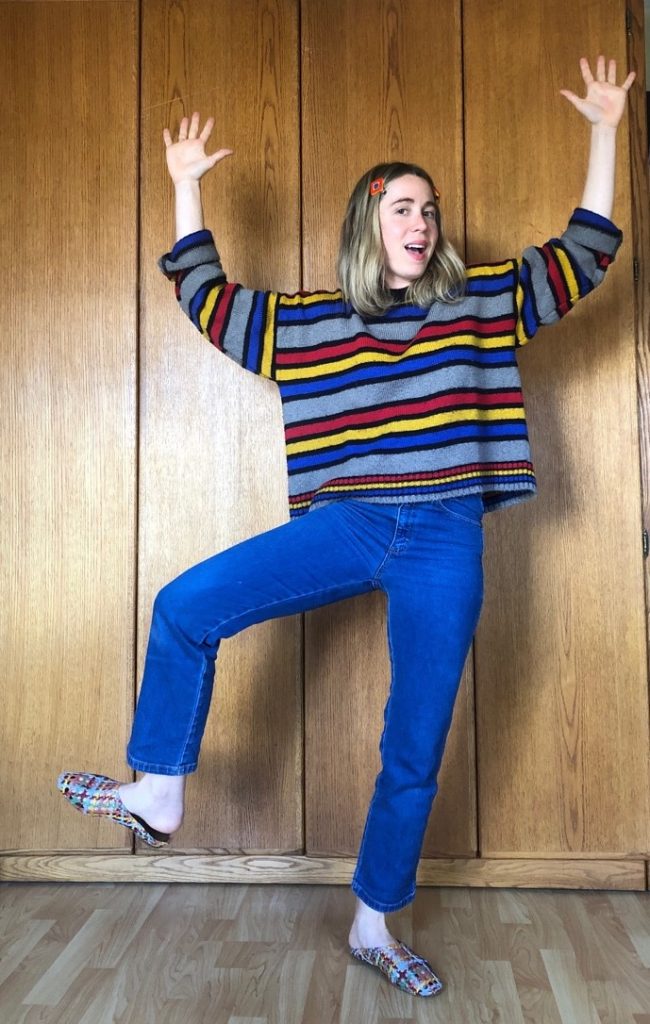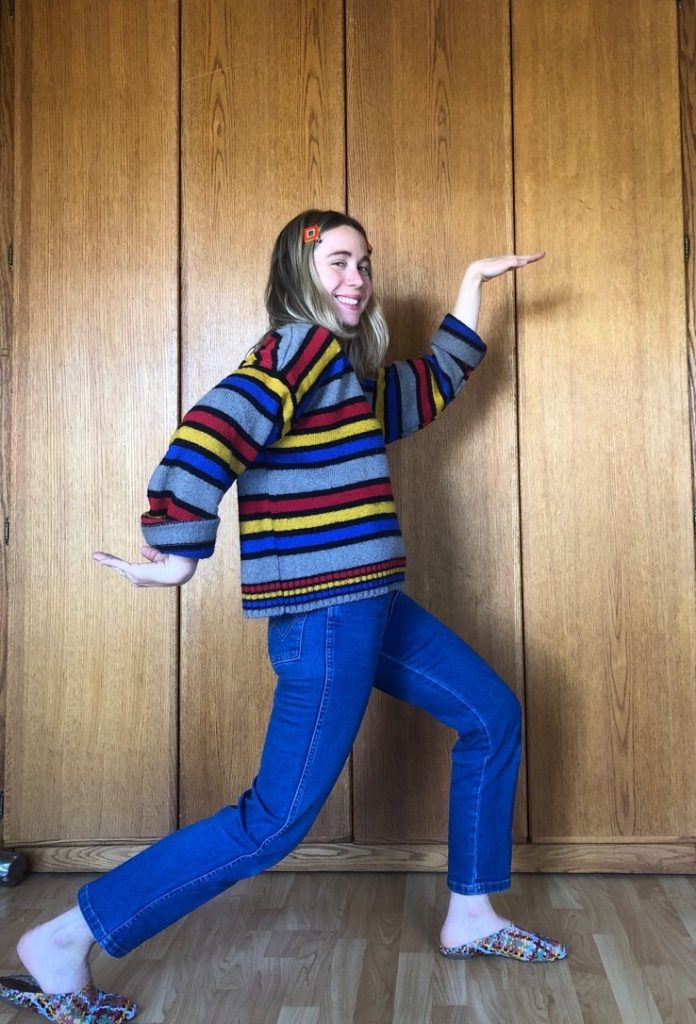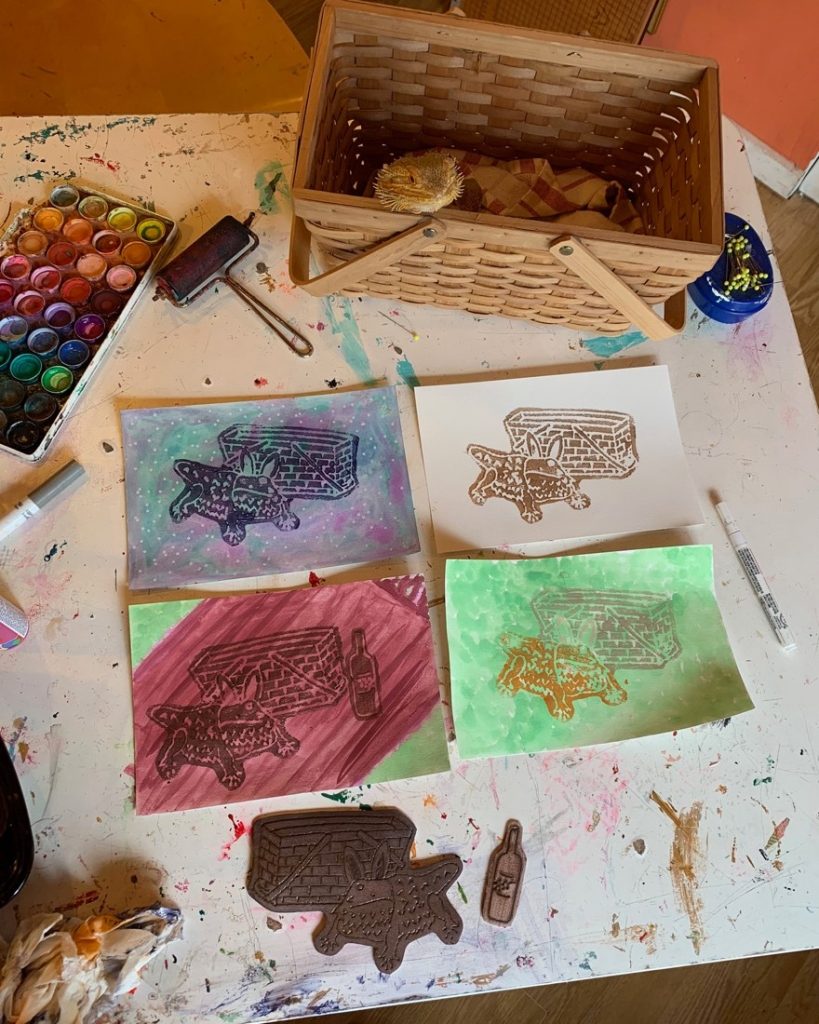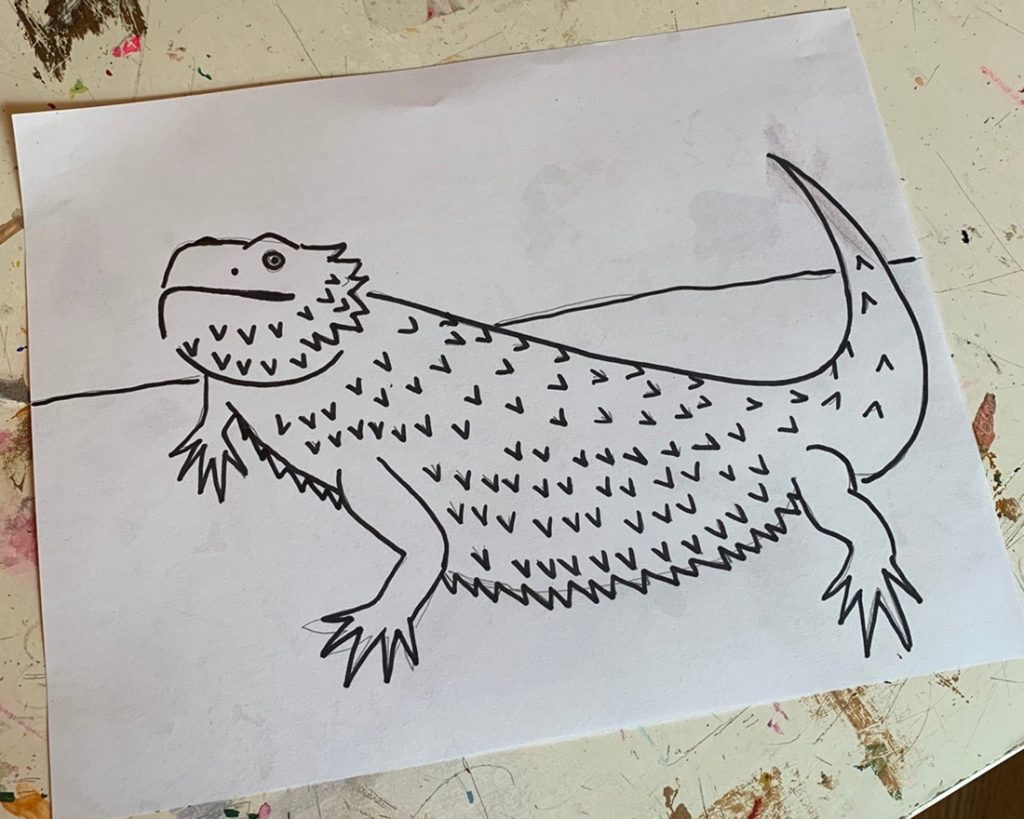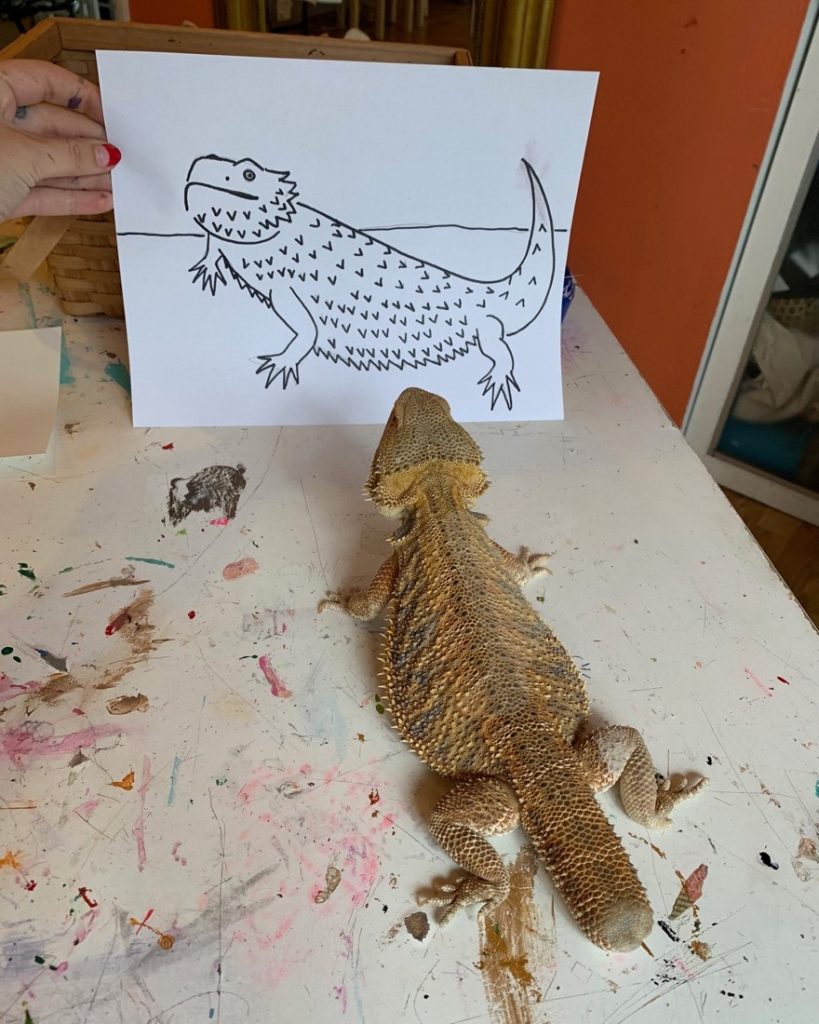In his first show in New York, he painted all the walls with his art, and then put up his paintings and his sculptures. Gaining more and more attention and success, Keith began to expand his creative horizons by painting major on-site murals all over the world
In whatever part of the world Keith found himself and no matter what honors came to him, he would always insist that children be a part of his appearances. He set up workshops with them and always made sure that everyone had a lot of fun.
“What I like about children is their imagination,” he said. “It’s a combination of honesty and freedom they seem to have in expressing whatever is on their minds. So, whenever I could, I did projects with kids.
His paintings and sculptures became very expensive. He wanted everyone to be able to buy his work, so he opened a new store called the Pop Shop to sell his art on posters, buttons, T-shirts, and games.

What did we notice from taking a look at Keith Haring’s work?
- His art involves a lot of colors and movement!! So let’s get movin’
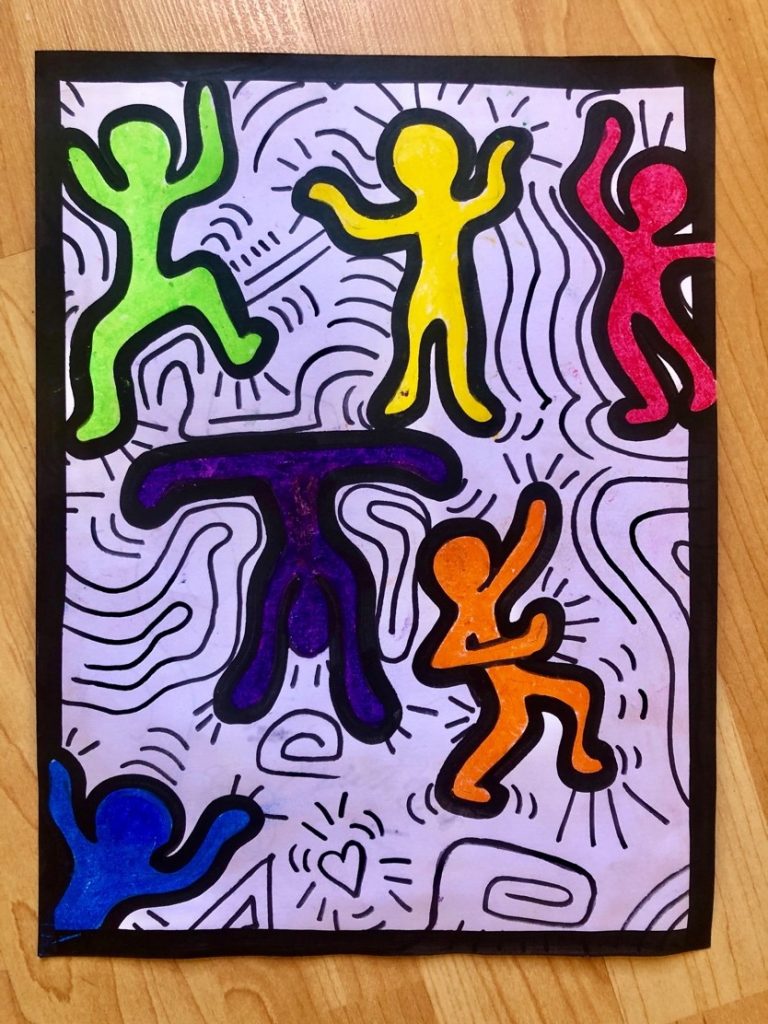
You will need:
- A pencil
- A sharpie
- An eraser
- Coloring material: crayons OR oil pastels OR colored pencils
And someone to model for you! J
STEP 1:
Let’s learn how to draw a character in the style of Keith Haring. Ask your model to do a pose that involves MOVEMENT! Some examples:
Draw the pose as a stick figure drawing without adding any details, and do not press too hard with your pencil! Draw enough characters to fill the page, each with a different pose and make sure to turn your paper so that your drawings are spread all over the page and not all bunched up in the same spot. See the stick figure drawing of my poses below:

STEP 2:
Put your stick figure in a bubble! Draw a line all around your stick figure charater, like so:

STEP 3:
Outline your bubble with a sharpie. Only the bubble! Do not go over the stick figure, see example:

STEP 4:
Erase the pencil lines
STEP 5:
Color in the characters! Try using different colors for each one.
STEP 6:
Add movement lines to fill in the white space that is left: swirls, long lines, short lines, squiggles or simple designs are all great options. Use your imagination!





